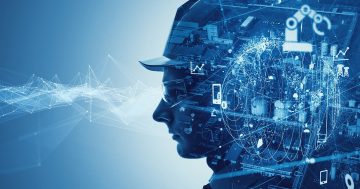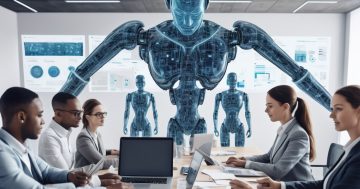Ofir Paldi* says technology is taking organizational communication and collaboration to the next level.
 In a digital world fuelled by a steady influx of data, achieving organizational excellence depends on giving everyone immediate access to accurate, up-to-date information.
In a digital world fuelled by a steady influx of data, achieving organizational excellence depends on giving everyone immediate access to accurate, up-to-date information.
Organizational-wide communication and collaboration are vital.
Mission-critical decisions, in particular, depend on the timely sharing of lessons learned and insights from all departments.
With new technology based on artificial intelligence (AI) and machine learning (ML), it’s easier than ever to share data effectively and consistently.
Significantly, technology now enables businesses to tap the knowledge stored in one person’s mind and translate it into actionable data that anyone can leverage whenever they need it.
This technology takes organizational communication and collaboration to the next level — an invaluable advantage in the pursuit of excellence.
Driven by data
The trend toward decision intelligence brings together processes and technologies to support “continuous, connected, contextual decision automation and augmentation,” according to Gartner senior research director Pieter J. den Hamer.
Decision intelligence encompasses data-driven decision-making and the growing use of AI and ML to accelerate and improve data analysis.
With the advantage of more data that’s also more relevant and trustworthy, data analysts can produce stronger insights — resulting in faster and more confident decisions, greater efficiency and productivity, and a sound foundation for business strategies.
Indeed, companies now have the power to leverage data from anywhere using new technology platforms made possible by AI.
The in-depth and diverse knowledge derived from external data, internal data, or the minds of individual employees supports data-driven decisions and can be shared company-wide.
Decision intelligence means the right data at the right time
Technology can also provide a simple yet powerful AI tool for employees to use during their day-to-day activities.
They can capture lessons learned as they work in real time, and adjust their actions when a corrective action is needed, also in real time.
Throughout this process, AI defines actionable takeaways, shares insights and offers concise lessons learned (suggesting corrective actions, for example), all of which can boost the entire team’s performance.
Since AI turns the data collected from daily work into actionable lessons learned, every team member can contribute to and draw on their team’s collective knowledge — and the entire company’s collective knowledge as well.
The technology prompts them to capture their work, and it “knows” when a team member should see information relevant to their current task.
AI ensures everyone has the right data at the right time, exactly when they need it.
In this vision of a data-driven environment, access to data liberates and empowers employees to pursue new ideas, Harvard Business Review writes.
In some companies, however, a cultural shift might be needed first.
Organizations must “elevate their data strategy, so it is intertwined with their business strategy … both strategies need to be given the same weight and importance and become embedded in the culture.”
The end of silos
All data is crucial to the data-driven organization — not just information that flows in from countless sources outside the company, but information generated inside it as well.
Unfortunately, separate departments and teams often isolate their own data in silos, making it inaccessible to others.
It’s easy to see why data silos represent possibly the most common obstacle to communication and collaboration.
If teams don’t know what’s happening in other departments, they may never realize that information they need already exists within the enterprise.
Continuous improvement and knowledge-sharing processes allow data to flow freely throughout the enterprise — putting an end to disruptive silos.
Organizations may contain another kind of silo as well, in the form of employees who alone hold unique information and expertise in their heads.
Artificial intelligence can quantify individual knowledge and experience and convert it into data-driven insights, ready to be leveraged on demand across the organization.
The sophisticated technology behind constant learning, communication, and collaboration enable organizations to leverage their most valuable asset — data — even down to the highly specific knowledge and expertise of individual team members.
In the important practice of decision intelligence, AI gives people tools to capture and share their own knowledge instantly and learn from one another’s experiences, helping businesses expand their institutional knowledge simply, organically and successfully.
*Ofir Paldi is the cofounder and CEO of Shamaym, a company that created a collaborative digital workspace and mobile app that uses human intelligence & machine learning to identify the key data needed to improve performance.
This article first appeared at venturebeat.com.











